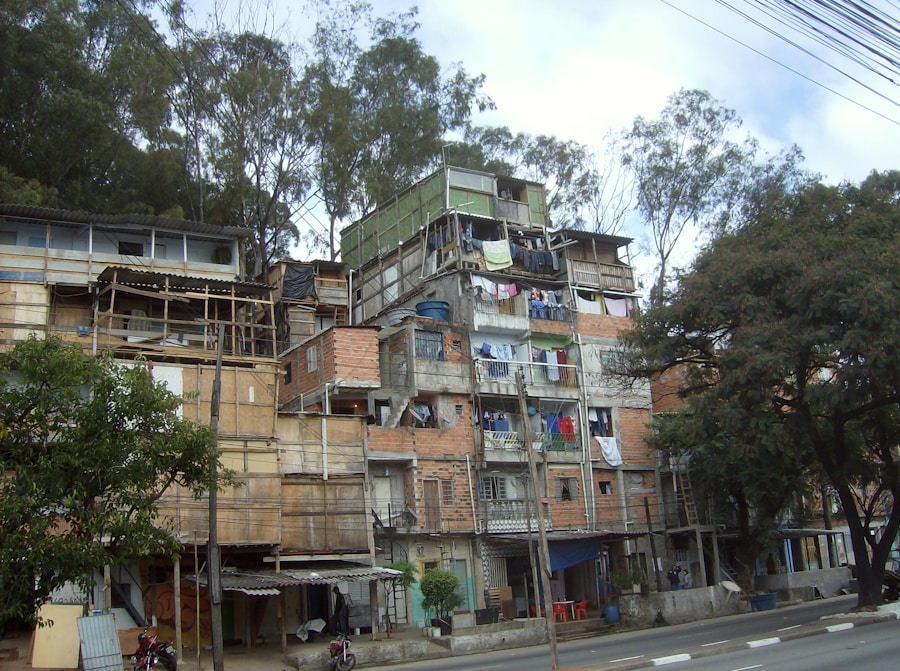Urban planning plays a pivotal role in the revitalization of cities, serving as a blueprint for sustainable growth and development. As urban areas face challenges such as population density, environmental degradation, and economic decline, effective planning becomes essential to create livable, vibrant communities. The process of urban planning involves a comprehensive analysis of land use, infrastructure, and community needs, allowing city planners to devise strategies that enhance the quality of life for residents.
By prioritizing green spaces, transportation networks, and mixed-use developments, urban planners can transform neglected areas into thriving neighborhoods that attract businesses and residents alike. Moreover, urban planning is crucial in addressing social equity within cities. Historically marginalized communities often bear the brunt of urban decay, facing issues such as inadequate housing, limited access to services, and environmental hazards.
Thoughtful urban planning can mitigate these disparities by ensuring that resources are allocated equitably across different neighborhoods. For instance, integrating affordable housing initiatives within revitalization projects can help prevent displacement and promote inclusivity. By fostering a sense of community and belonging, urban planning not only revitalizes physical spaces but also strengthens social ties among residents.
Key Takeaways
- Urban planning plays a crucial role in revitalizing cities by creating a framework for sustainable development and growth.
- Strategies for sustainable urban development include promoting mixed-use development, implementing green infrastructure, and prioritizing public transportation.
- Public spaces are essential for urban revitalization as they provide opportunities for community interaction, cultural expression, and recreation.
- Addressing housing affordability and accessibility in urban planning involves implementing affordable housing policies, promoting mixed-income neighborhoods, and preserving existing affordable housing stock.
- Integrating transportation and infrastructure in urban revitalization involves improving public transit, creating walkable and bike-friendly streets, and prioritizing infrastructure investments in underserved communities.
Strategies for Sustainable Urban Development
Sustainable urban development is a multifaceted approach that seeks to balance economic growth with environmental stewardship and social equity. One effective strategy is the implementation of mixed-use developments that combine residential, commercial, and recreational spaces. This approach reduces the need for extensive commuting, thereby lowering carbon emissions and promoting a more walkable urban environment.
Cities like Portland, Oregon, have successfully adopted this model, creating vibrant neighborhoods where residents can live, work, and play without relying heavily on automobiles. Another critical strategy involves the promotion of green infrastructure. This includes the integration of parks, green roofs, and permeable surfaces into urban landscapes to manage stormwater runoff and enhance biodiversity.
For example, New York City’s High Line project transformed an abandoned elevated railway into a linear park that not only provides recreational space but also supports local flora and fauna. Such initiatives not only improve the aesthetic appeal of urban areas but also contribute to climate resilience by mitigating the effects of urban heat islands and flooding.
The Role of Public Spaces in Urban Revitalization

Public spaces are vital components of urban revitalization efforts, serving as communal hubs that foster social interaction and cultural exchange. Well-designed public spaces can enhance the livability of cities by providing areas for recreation, relaxation, and community events. Parks, plazas, and waterfronts create opportunities for residents to engage with one another and participate in civic life.
For instance, the transformation of San Francisco’s Embarcadero waterfront into a pedestrian-friendly promenade has revitalized the area, attracting both locals and tourists while promoting economic activity. Furthermore, public spaces can serve as catalysts for economic development. By creating attractive environments for businesses to thrive, cities can stimulate local economies and generate jobs.
The revitalization of downtown areas often hinges on the creation of vibrant public spaces that draw foot traffic and encourage spending. Cities like Barcelona have successfully integrated public art installations and open-air markets into their urban fabric, enhancing the cultural identity of neighborhoods while providing economic opportunities for local artisans and entrepreneurs.
Addressing Housing Affordability and Accessibility in Urban Planning
| City | Median Home Price | Average Rent | Percentage of Income Spent on Housing |
|---|---|---|---|
| New York City | 680,000 | 3,000 | 35% |
| San Francisco | 1,300,000 | 3,500 | 40% |
| Los Angeles | 650,000 | 2,800 | 30% |
Housing affordability is a pressing issue in many urban areas, exacerbated by rising property values and gentrification. Urban planners must prioritize strategies that ensure access to affordable housing for all residents. This can be achieved through policies that promote inclusionary zoning, which requires developers to allocate a percentage of new housing units for low- to moderate-income families.
Cities like San Francisco have implemented such policies to combat displacement and maintain diverse communities. In addition to inclusionary zoning, innovative financing mechanisms can help address housing affordability. Community land trusts (CLTs) are one such model that allows communities to collectively own land while providing affordable housing options.
By removing land from the speculative market, CLTs can stabilize housing costs and ensure long-term affordability. The success of CLTs in cities like Burlington, Vermont demonstrates how community-driven approaches can effectively tackle housing challenges while fostering a sense of ownership among residents.
Integrating Transportation and Infrastructure in Urban Revitalization
Transportation infrastructure is a critical element in the success of urban revitalization efforts. Efficient public transit systems not only reduce traffic congestion but also enhance accessibility to jobs, education, and services. Cities must prioritize investments in public transportation networks that connect underserved neighborhoods to economic opportunities.
For example, the expansion of light rail systems in cities like Los Angeles has improved mobility for residents while promoting sustainable development along transit corridors. Moreover, integrating active transportation options such as biking and walking into urban planning is essential for creating inclusive cities. The development of bike lanes and pedestrian-friendly streets encourages healthier lifestyles while reducing reliance on cars.
Cities like Copenhagen have set a global standard by prioritizing cycling infrastructure, resulting in a significant increase in bike usage among residents. By fostering multimodal transportation options, urban planners can create interconnected communities that promote social equity and environmental sustainability.
Promoting Economic Development through Urban Planning
Strategic Zoning for Business Diversity
Strategic zoning regulations can attract a range of industries, ensuring that local enterprises thrive alongside larger corporations. For example, cities like Austin, Texas, have implemented creative zoning policies that support tech startups while preserving the character of existing neighborhoods.
Public-Private Partnerships for Economic Development
Urban planners can leverage public-private partnerships to stimulate economic development initiatives. Collaborations between government entities and private developers can lead to the revitalization of underutilized properties and the creation of job opportunities.
Transforming Neglected Areas into Vibrant Commercial Districts
The redevelopment of Detroit’s waterfront is a prime illustration of how such partnerships can transform neglected areas into vibrant commercial districts that attract investment and tourism.
Community Engagement and Participation in Urban Revitalization Projects
Community engagement is a cornerstone of successful urban revitalization efforts. Involving residents in the planning process ensures that their voices are heard and their needs are addressed. Effective engagement strategies include public forums, workshops, and surveys that allow community members to provide input on proposed projects.
Cities like Seattle have implemented participatory budgeting initiatives that empower residents to allocate funds for local improvements based on their priorities. Moreover, fostering a sense of ownership among community members can lead to more sustainable outcomes. When residents are actively involved in shaping their neighborhoods, they are more likely to take pride in their surroundings and contribute to ongoing maintenance efforts.
Initiatives such as community gardens or neighborhood clean-up events not only beautify urban spaces but also strengthen social bonds among residents.
Case Studies of Successful Urban Revitalization through Urban Planning
Examining successful case studies provides valuable insights into effective urban revitalization strategies. One notable example is the transformation of Pittsburgh’s former industrial sites into vibrant mixed-use developments. The South Side Works project revitalized a once-neglected area by incorporating residential units, retail spaces, and recreational facilities along the Monongahela Riverfront.
This comprehensive approach not only attracted new residents but also spurred economic growth through job creation. Another compelling case is the revitalization of MedellÃn, Colombia, which has garnered international acclaim for its innovative urban planning initiatives. The city implemented a series of cable car systems that connect marginalized neighborhoods to the city center, improving access to education and employment opportunities for residents.
Additionally, public spaces such as parks and libraries were integrated into these neighborhoods, fostering social cohesion and community pride. These case studies illustrate the transformative power of thoughtful urban planning in revitalizing cities. By prioritizing sustainability, inclusivity, and community engagement, urban planners can create environments that not only meet the needs of current residents but also lay the groundwork for future generations to thrive in vibrant urban landscapes.
If you are interested in urban planning, you may also want to check out this article on luxurycondogarages.com about the benefits of incorporating luxury condo garages into urban development projects. These garages not only provide convenient parking solutions for residents, but they also contribute to the overall aesthetic and functionality of a city. To learn more, visit luxurycondogarages.com.








Leave a Reply